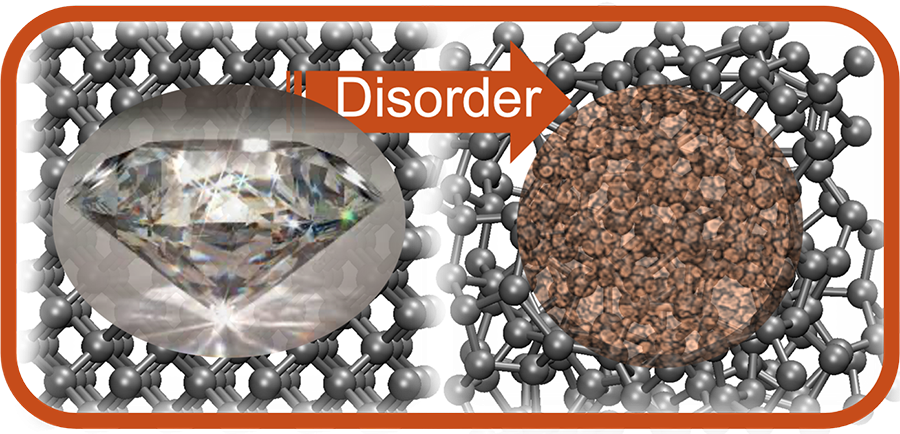Reviewed by Alex SmithJul 19 2022
Precious diamonds can be created when carbon atoms arrange themselves into a flawlessly repeating three-dimensional crystal. Carbon can also be arranged in flat sheets that are repeated to create the gleaming grey graphite that is used to produce pencils.
 Unlike diamonds (left) and graphite, amorphous carbon (right) has no crystalline structure; PME researchers have now shed new light on its electronic properties. Image Credit: Galli Group
Unlike diamonds (left) and graphite, amorphous carbon (right) has no crystalline structure; PME researchers have now shed new light on its electronic properties. Image Credit: Galli Group
But certain kinds of carbon are less known than others. It is difficult to examine amorphous carbon because it lacks a repeating chemical structure and is often a sooty black substance.
Now, scientists from the Pritzker School of Molecular Engineering (PME) at the University of Chicago have made use of a novel framework to comprehend the electrical characteristics of amorphous carbon.
Their research was published in the Proceedings of the National Academy of Sciences (PNAS) and will help scientists estimate how the material conducts electricity and absorbs light.
We need to understand how disordered carbon works at a molecular level to be able to engineer this material for applications like solar energy conversion.
Giulia Galli, Liew Family Professor, Molecular Engineering, University of Chicago
Galli is also a professor of Chemistry. She is also the head of the MICCoM center and a senior scientist at Argonne National Laboratory.
For many years, researchers have used the principles of classical mechanics — the set of equations that, for instance, define how a car accelerates or how a ball falls through the air — to predict how the atoms move in amorphous carbon.
These classical equations are a decent approximation to precisely capture many of the features of the materials for some heavy atoms of the periodic table. However, the research led by Galli has shown that applying these classical equations to describe the movement of atoms is insufficient for many kinds of carbon, and amorphous carbons in particular.
Amorphous carbon has many properties that make it valuable for a number of applications, however modeling and simulating its properties at the fundamental level is challenging.
Arpan Kundu, Study First Author and Postdoctoral Research Scholar, University of Chicago
For the past 30 years, Galli has developed and applied quantum mechanical techniques to simulate and describe the characteristics of molecules and materials. At the start of her career, she looked into amorphous carbon; more recently, she went back to the problem with new insight.
New simulations of the electrical characteristics of amorphous carbon were performed by Galli, Kundu, and undergraduate physics researcher Yunxiang (Tony) Song, who this time included quantum principles to characterize the motions of both the electrons and nuclei of carbon atoms.
They discovered that to precisely anticipate the characteristics of amorphous carbon, it is essential to use quantum mechanics for both, rather than classical mechanics for the nuclei.
For example, the PME researchers anticipated a greater electrical conductivity than would have been expected using their revised quantum mechanical models.
According to the researchers, the results presented in the PNAS publication are helpful in understanding not just amorphous carbon but also other related amorphous solids.
However, they also noted that there is still a great deal of work to be done since disordered carbon compounds can have dramatically varied characteristics depending on their density, which in turn relies on the technique used to manufacture the material.
Kundu added, “When something is arranged in a crystal, you know exactly what its structure is, but once it is disordered, it can be disordered in many possible ways.”
The group intends to keep researching amorphous carbon and its possible uses.
Journal Reference:
Kundu, A., et al. (2022). Influence of nuclear quantum effects on the electronic properties of amorphous carbon. Proceedings of the National Academy of Sciences. doi.org/10.1073/pnas.2203083119.